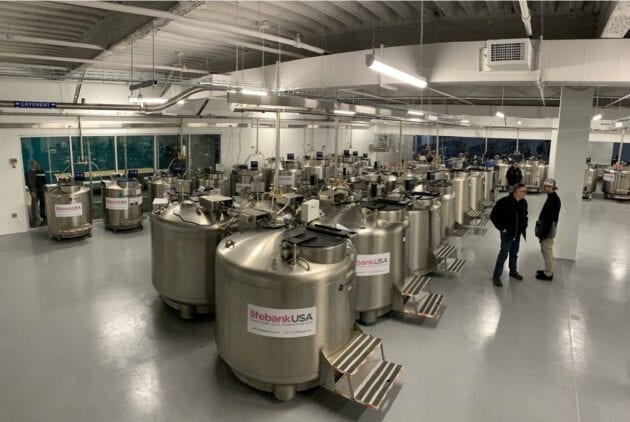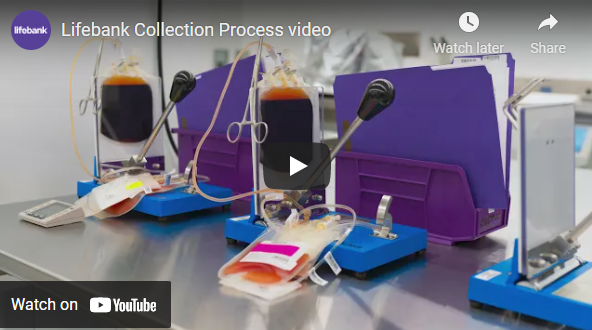Collection
& Storage
Processing is a critical step in protecting cells for banking and increasing the number collected from cord blood, placental blood, or placental tissue. At Lifebank, our state-of-the-art processing methods help ensure that the maximum number of cells are preserved for future use.

WHAT MAKES US DIFFERENT
- Industry leading cyropreservation
- Leadership composed of pioneers in biomedical research and cord blood banking
- Lifebank uses unique retrieval technologies to collect the highest number of cells possible for use today.
- The cells we procure have potential use in advanced and emerging treatments.
- Comprehensive options for placental banking
GET AN INSIDE LOOK
The Lifebank Collection Process
Have you ever wondered what happens to your collection after our carriers pick it up? Watch this video to get an inside look to see how we process and store your collection using Lifebank’s unique and patented processing methods!

How Red Blood Cells Affect Cell Recovery Rates
Other cord blood banks may promise you the highest cell recovery rates, often referred to as Total Nucleated Cell (TNC) recovery. Keep in mind that if red blood cells are not removed, the TNC count may include red blood cells and other unwanted cells that have no therapeutic value, and artificially inflate the number of cells recovered. In fact, a study of cord blood units showed that some consisted of more than 40% red blood cells.2 When you bank with Lifebank, your baby’s collection will contain, on average, less than 1% red blood cells.3
Red Blood Cell Removal Matters
Lifebank’s red blood cell depletion process also eliminates the need for additional processing at the time of transplant if your baby’s banked cells are ever needed. This is important because additional processing may lower the number of cells available for use. Red blood cell removal also reduces the risk of blood type incompatibility, which could lead to complications if the cord blood unit is used for a sibling or other relative.1
Our Heparin-free Collection Process
Lifebank’s heparin-free collection process uses a cell-protecting solution called citrate phosphate dextrose (CPD), which allows cells to maintain their integrity in the time between collection and processing.
Close to Three Major Airports
Our laboratories are close to three major airports that are served by every major U.S. airline. This allows our couriers to deliver collection kits to our labs as quickly and efficiently as possible.
REFERENCES
- Parent’s Guide to Cord Blood Foundation. Why red blood cells should be removed before cord blood storage. Available at: http://parentsguidecordblood.org/en/news/why-red-blood-cells-should-be-removed-cord-blood-storage. Accessed January 21, 2016.
- Larghero J, Rea D, Brossard Y, et al. Prospective flow cytometric evaluation of nucleated red blood cells in cord blood units and relationship with nucleated and CD34(+) cell quantification. Transfusion. 2006; 46(3):403-406.
- Data on file, HLI Cellular Therapeutics, LLC d/b/a LifebankUSA; 2016.





